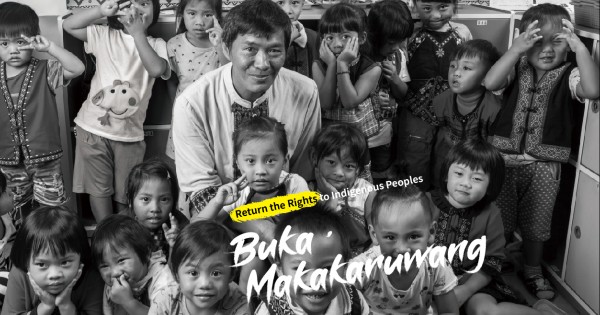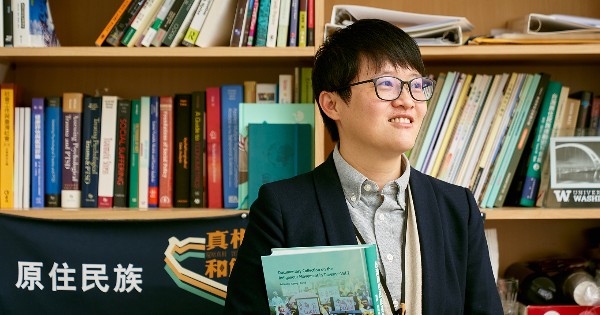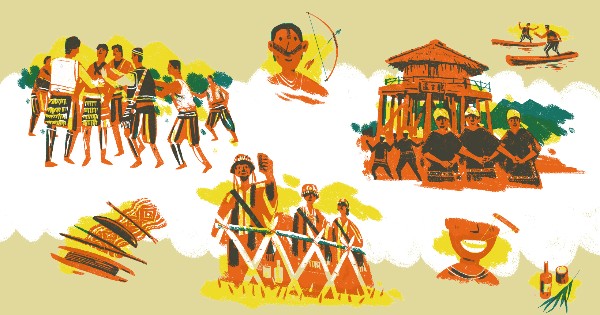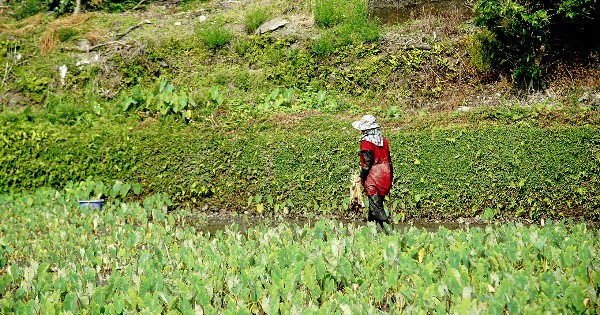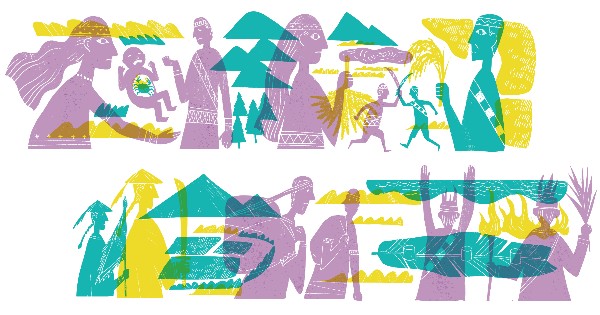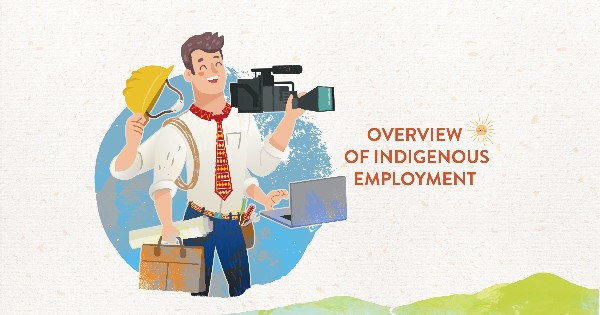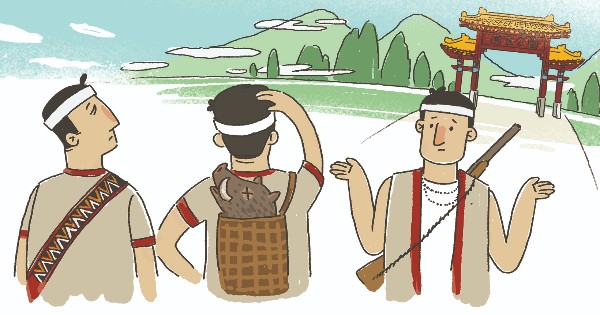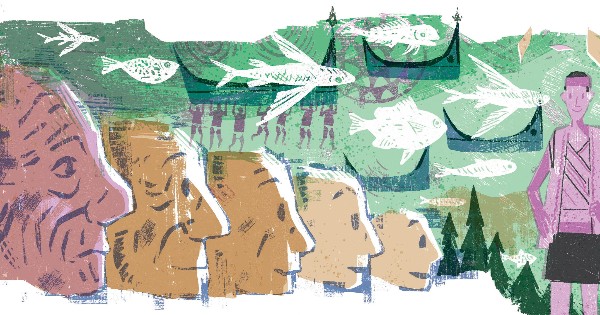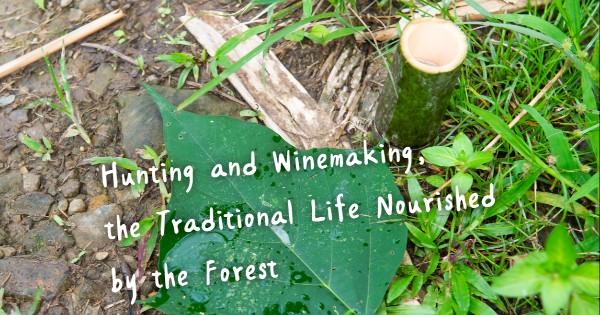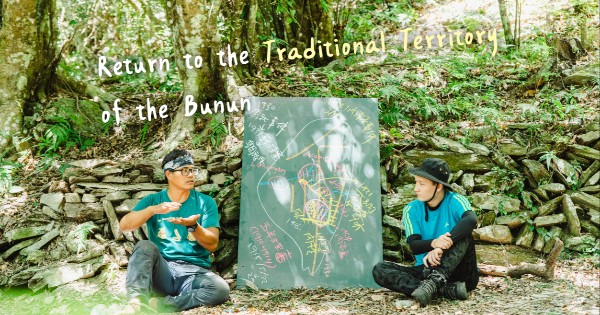2021-06-24
Return the Rights to Indigenous Peoples | Buka.Makakaruwang
Written by Liang Weng-Jin; Photo credit: Huang Tzu-Ming; Translated by Ker Nai-Yu
After the rapidly moving age of indigenous movements, buka.makakaruwang left everything behind and returned to his indigenous community. From the hot-headed youth carrying a coffin in protest, he turned to work for the church for almost two decades. Now he is the indigenous language promoter in his community, taking elders and children on a journey of learning to use their own language again, and retrieving the culture and dignity of their people.
2020-12-03
Ciwang Teyra | Healing Historical Traumas through Understandings
Written by Liang Wen-Jing; Photo credit: Lin Yi-Hsien; Translated by Lin Shih-Fen
“We can’t stick to the echo chamber and refuse to change the status quo. We indigenous people, a minority group that accounts for only 2.4% of the total number of Taiwan, must take the initiative to open dialogue with the other 97.6% of the majority. Only by doing so will there be possibilities for changes to happen.”
2020-09-23
Cultivating Seed Teachers for Hla’alua | The Septuagenarian who Salvages the Endangered Mother Tongue
Written by Chen Yi-Ru; Illustrated by Lin Jia-Dong; Translated by Lin Shih-Fen
Hla’alua is one of the endangered indigenous languages in Taiwan. The language and culture of the Hla’alua are on the verge of being lost due to its sparse population. But thanks to the unceasing efforts of amalanamahlʉ salapuana, the 72 years old village elder who initiated the Hla’alua revitalization project more than a decade ago, the language has been passed on to the next generation, heading toward a promising future of revitalization.
2020-06-21
Growing Up Means Responsibility
Written By Kuo Po-Jiun; Translated by 柯乃瑜 Nai-yu Ke; Illustrated by Lin Jia-Dong
In the early indigenous society, armed conflicts sometimes occur between different ethnic groups and villages. In order to protect the village and assume responsibility for public affairs in the village, indigenous peoples developed an age class system where responsibilities and obligations in the village are distributed amongst the males according to age. Boys in the village join the age class at around 10 years of age. In this organization, they receive strict cultural education and physical training......
2020-04-23
The Tao's Rapidly Disappearing Culinary Culture - Where has Taro on the Dining Tables Gone?
Written by You Tai; Translated by 林士棻 Shihfen Lin; Photo credit: Zeng Xin-Yao
At noon, as the bell rang at Lanyu°¶s Yayu Elementary School, the schoolchildren walked out of classrooms one after another and lined up in the hallway for the school lunch. On the cart were fried rice, scrambled eggs, stirred-fried bok choy, and radish soup. But there were no fish and taro, the traditional staple foods of the Tao people native to the island.
...
2019-11-28
Kavalan and Ketagalan: Taiwanese Plains Indigenous Peoples in Northern Taiwan
Illustrated by Lin Jia-Dong
Originally settled down on Lanyang Plain, the majority of Kavalan people relocated on Huatung Coast after invaded by non-indigenous peoples and were often mistakened as Pangcah people. Now, Kavalan has been officially recognized by the government as the members of 11th indigenous community but for Kavalan people, they have not found their own name.
2019-10-21
Overview of Indigenous People Employment
Edit by Kuo Po-Jiun; Translated by 鄭逸瑄Ian Yi-Hsuan Cheng; Illustrated by James Lee
Source: Council of Indigenous People “108年第1季原住民就業狀況調查報告書”
2019-09-24
The Indigenous Peoples Living in Cities
Written by Kuo Po-Jiun; Translated by 吳宜錚 Sally I.C. Wu; Illustrated by Julia Yellow
In Taiwan, there are about 560,000 indigenous peoples. According to a survey done by CIP, 47.53% live in cities around Taiwan while 23% and 29%......
2019-09-12
Stranger to Modern Civilization
Written by Savungaz Valincinan; Translated by 柯乃瑜 Nai-yu Ker; Illustration by James Lee
The indigenous peoples have been living symbiotically with the environment in Taiwan for thousands of years. For generations, our ancestors have......
2018-10-23
Delve into this fantastic and fun world of mythology
2018 Issue 20 Editorial
It is through oral narratives that history, culture, and memories are recounted. Though indigenous peoples have a rich history of oral tradition......
2022-12-07
Hunting and Winemaking, the Traditional Life Nourished by the Forest
Written by Chiu Mu-Jung; Photo credit: Huang Jiang-Bing
The forest and rivers sustain the lifeline of the Tsou while forming their culture and order. When men hunt in the mountain on special occasions, women would make wine at home to show their appreciation for the hardworking men.
2022-10-06
Return to the Traditional Territory of the Bunun
Written by Chiu Mu-Jung; Photo credit: Lin Jing-Yi
Most people think of those who live deep in the mountains and sing Pasibutbut when they think of the Bunun people, but the Bunun didn’t start as mountain people, they actually originated from Lamungan, downstream of Zhuoshui River (currently where the Nantou Service Station sits). Legend has it that a great flood forced Bunun ancestors to migrate higher up the Central Mountain Range and the Yushan Mountain Range, thus dispersing the 5 main communities in between the rivers along the mountain ranges......
